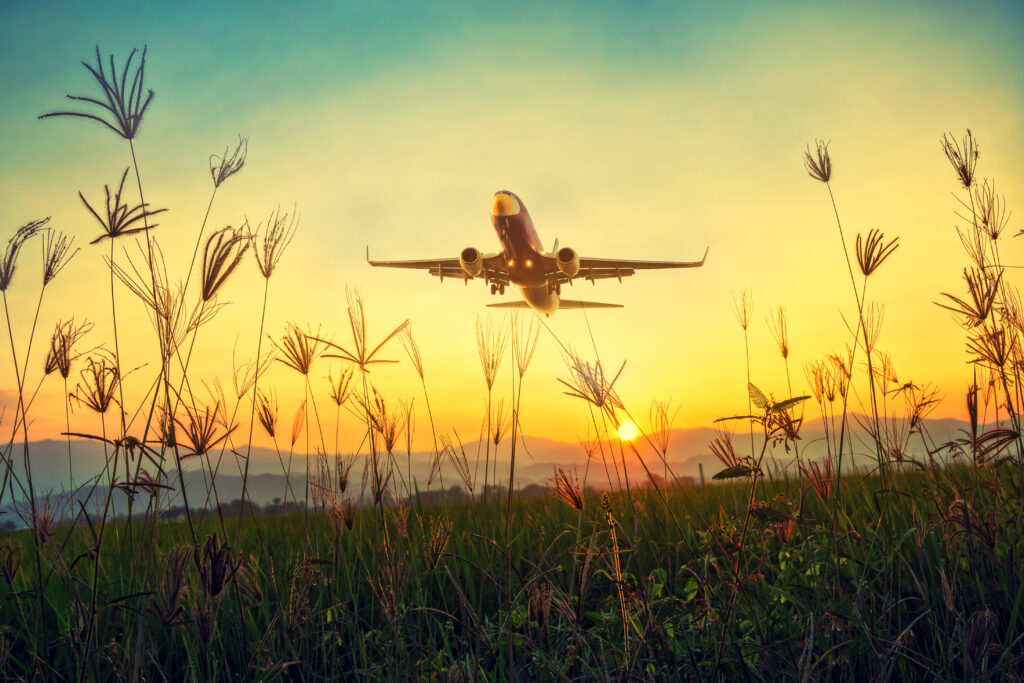
Facts Of Science : Air travel has advanced significantly over time, with aircraft being able to navigate even the most difficult routes. One such achievement that would have been considered unachievable in the past is flights from North America to Europe or Asia that traverse the North Pole. There is, however, one exception: airplanes do not fly over the Pacific Ocean even now. It may sound contradictory to save time, yet they would rather travel a curving path over the Pacific Ocean. What, then, about the Pacific Ocean deters airplanes? Let’s investigate.
When it comes to flying, time and cost savings are crucial. Airlines are making every effort to travel from point A to point B as quickly and using as little gasoline as possible because jet fuel is expensive. A plane like the Boeing 747 needs about five gallons of fuel each mile (12 liters per kilometer) or about one gallon (about four liters) of fuel every second. It could easily burn up 36,000 gallons (150,000 liters) during a 10-hour flight.
The length of the flight is the other decisive consideration. Operational expenses must be covered by the airline for the duration of the flight. This covers not just the fuel but also the personnel, including the pilots and stewards. It’s also no secret that travelers want to get where they’re going as soon as possible. Because it would take too long and use too much fuel, planes do not fly directly over the Pacific Ocean. For an airline, determining the fastest route is crucial.
The Earth’s curvature has a significant impact on the routes that airlines select. Earth isn’t a flawless spherical. It features a “equatorial bulge” and is slightly flatter near the poles. Its axis of rotation is to blame for this. The diameter of the Earth is 7,900 miles (12,714 km) at the poles and 7,926 miles (12,756 km) at the equator. This indicates that no two roads are the same when it comes to the distance between two spots on Earth.
There is a significant time and fuel savings when flying the “Great Circle Route,” which circles the smaller circumference of the Earth. Additionally, jet streams, swift, narrow air currents, and tailwinds of up to 200 miles per hour (320 kph) are taken into consideration when choosing routes by airlines. Travelers can save a significant amount of gasoline and reach their destination more quickly by using these wind corridors. Curving the path could also assist prevent turbulence and opposing jet streams.
The Pacific Ocean is off-limits to aircraft since there aren’t enough possible landing spots in case of emergency
The sheer size of the Pacific Ocean is another reason airplanes don’t fly over it. It would be challenging to locate a safe landing spot for the plane in case of emergency because the ocean is the largest on the planet. Even though pilots are trained to land in the sea, the rough waves and strong winds make landing in the open ocean dangerous. Pilots would also need to take into account any unfavorable weather, including marine storms.
Most airports are crossed on routes that pilots prefer to select. An emergency would be resolved more quickly if it landed at an airport, such as a mechanical malfunction or a medical issue. Even the most experienced pilot would find it terrifying to be over the Pacific Ocean when their engine fails.

[…] Asia that traverse the North Pole. There is, however, one exception: airplanes do not fly over the Pacific Ocean even now. It may sound contradictory to save time, yet they would rather travel a curving path over […]
Your article helped me a lot, is there any more related content? Thanks!